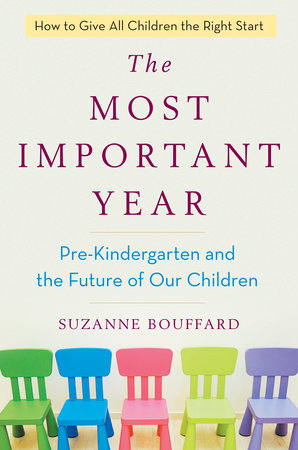7 Things You Didn’t Know About Preschool
by Suzanne Bouffard
Pre-K is a hot topic — in the news, in politics, at the playground. If you have young children in your family (or within a mile radius), it can seem like everyone is talking about where to send their children to preschool, when, and how to pay for it. (Pre-K and preschool are pretty much interchangeable terms, with some differences in program location and funding.) Researchers know more than ever before about what makes a pre-K program good for kids, but it’s easy to get overwhelmed when you are looking for a program and navigating the first years of school. Here are seven things to know:
1. Children benefit from pre-K only when their classrooms are high quality — and most are mediocre. Parents have to be informed consumers, and the things that matter most can be hard to see at first glance. Quality programs have: teachers who encourage and guide children rather than punishing them; lots of opportunities to engage in rich conversations, ask questions, and try new things; and age-appropriate curricula. Great programs also hire mentors or “coaches” who help teachers deal with challenges (there are many with little kids!) and be the best educators they can be.
2. You can find great pre-K programs in both the public and private sectors. Quality is about what programs do for children, not who pays for it. (That doesn’t mean cost is unimportant when you choose a program.) But each type of program has strengths and challenges. Public schools tend to require teachers to have more training and pay them more, which can help them attract and retain good staff, and they usually have more support staff like speech therapists and counselors. Private preschools often offer extended hours and flexibility, and a family-like atmosphere where staff are reflective of and connected with the families they serve.
3. Good teachers teach children how to be learners, not how to read sight words. Preschoolers should learn to be curious, think flexibly and solve problems, and develop self-regulation (more on that below) so they will be ready to learn in later grades. The “academic” skills they learn should be hands-on, engaging, and practical, like counting out art supplies, not memorizing a list of arbitrary words.
4. You don’t have to choose between play and learning — and you shouldn’t. Don’t let recent news stories fool you; the debate over play versus learning has long been settled. Studies show that children develop more complex vocabularies, understand sophisticated math concepts, and retain information better when they learn through play. They even learn self-control more easily by pretending to be a fictional character.
5. Almost half of early childhood educators are paid so little they are eligible for public assistance. Childcare and preschool teacher salaries are a national embarrassment, and they cost taxpayers about two billion dollars a year in food assistance and Medicaid benefits. The stress preschool teachers experience both inside and outside the classroom is detrimental for them and for the children they serve. The good news is that pre-K teachers in public schools tend to earn middle-class salaries similar to their K-12 colleagues. The bad news is that teachers in community programs, which rely on tuition or state subsidies, are paid almost $14,000 a year less.
6. The preschool years are a critical window for developing self-regulation. Advances in neuroscience have illuminated the fact that ages 3 to 5 are a crucial time for teaching children to focus, wait, and control their impulses. Those skills are not fully developed until the college years, but the roots are laid during preschool. We also know more than ever before about how to nurture those skills. Good preschool teachers have a treasure chest of games, songs, and routines that help in the classroom, and that they can share with you to use at home. Using similar routines at home and school helps children know what to expect and provides lots of practice.
7. Children who go to preschool for two years are more likely to do well in school later. Studies of public pre-K programs show that children who attend do better than their peers even in fifth grade, especially if those kids went to pre-K for two years instead of one. Those studies have looked mostly at children from low-income families, but research shows that middle- and upper-class children benefit from pre-K, too. Regardless of who you are or where you live, giving your children a solid foundation for learning is one of the best things you can do for them.
-
Read More About Pre-K:
The Most Important Year: Pre-Kindergarten and the Future of Our ChildrenAvailable from:Also available from:

